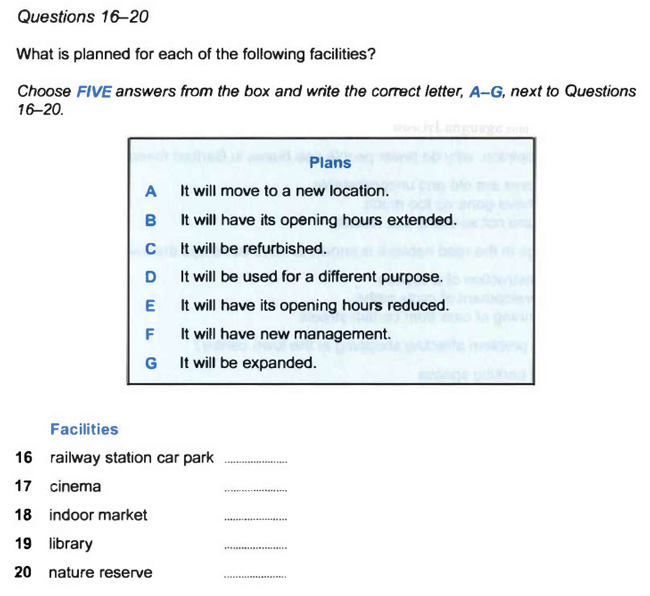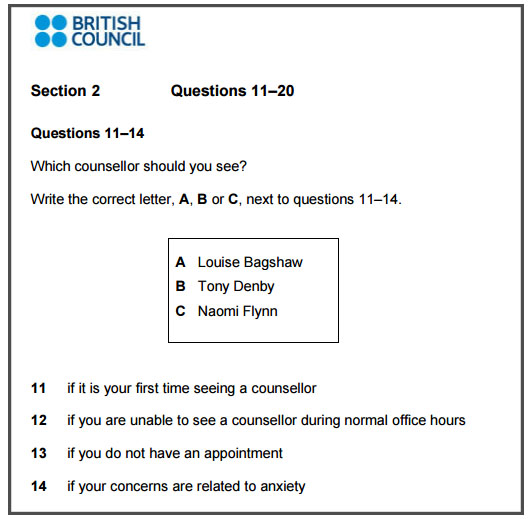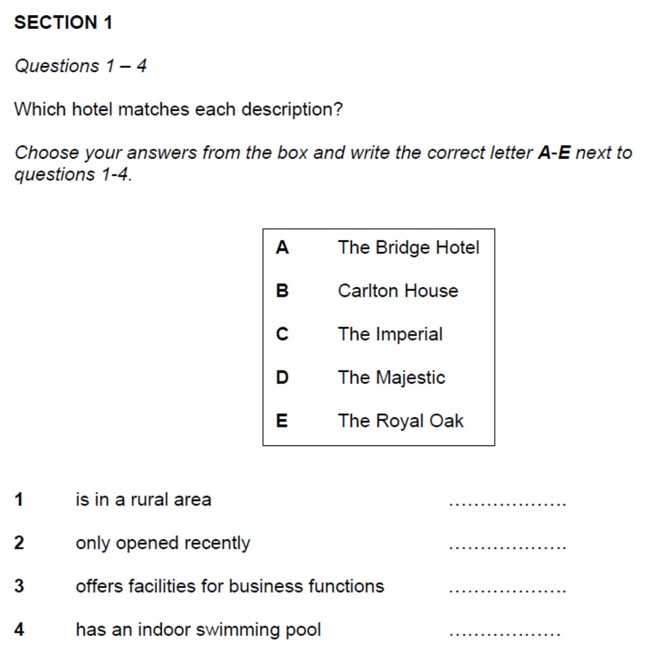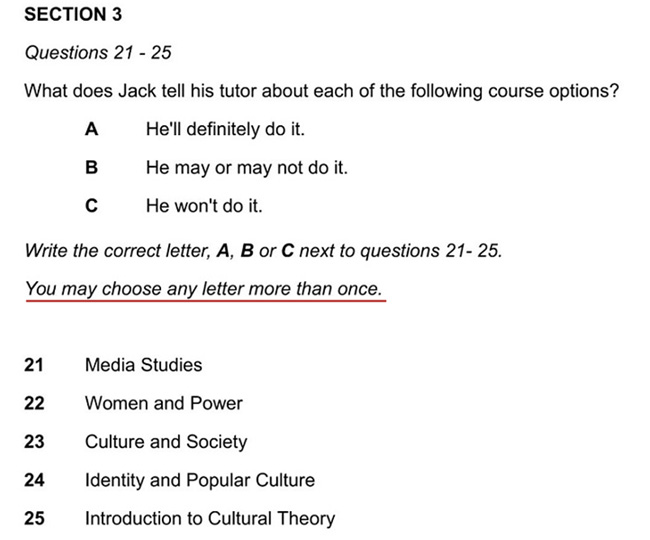IELTS Listening Matching Questions
1. Introduction to IELTS Listening Matching Questions
IELTS Listening Matching Questions are typically presented in two different sets of information including a list of items from the recording and another list of possible options. While listening to the detailed information, you need to puzzle out the connections among the elements in both sets and match appropriate couples depending on the audio.
Appearing mostly in section 1 or 3 of the IELTS Listening test, Matching Questions have different forms, such as:
- Questions: diverse items
Options: features or information related to items

- Questions: different topics on a particular field (parts in a presentation, literary works, historical events, etc.)
Options: features or information related to topics (involved people,
activities, etc.)

Besides, IELTS Listening Matching Questions sometimes do not share the same requirements. To be specific, for most of the questions, it requires you to match ONE option with ONE question.

On the other hand, you can choose any option MORE THAN ONCE.

No matter how hard this question type is, well-prepared strategies, tips, and daily practice can not hinder your opportunity to ace the Listening test.
2. IELTS Listening Matching Questions Strategies
2.1. Read the instructions carefully
Even though you thoroughly understand what each option and question mean, you may easily lose your points without taking notice of the requirements in the first place. There are two notes you need to take into consideration:
- Your answer must be in the form of A LETTER, not a word or phrase
- There may be any letter that can be used MORE THAN ONCE
Underline or highlight the requirements so that you can keep track while listening.
>>> Practice now: IELTS Listening Practice Test
2.2. Analyse the items and questions and Identify keywords
In order to fully understand the IELTS Listening Matching Questions, you should follow these steps:
- Step 1: Discern the relationship or connection between the list of options and questions by highlighting or underlining the keywords of the question sentences as well as the options

- Step 2: Figure out how options are related to each other and how they are different
(As in the picture above, options A, B, and C will decide whether Jack will do the courses or not, whereas items 21 to 25 are different courses that he will have a decision about.)
Don’t forget to think of the synonyms or paraphrases for changeable keywords.
2.3. Predict the answers
You can make predictions based on the information in both items and options, which may help you cross out some unmatched answers. However, don’t take those for granted or else you will lose your point regretfully.
2.4. Listen and fill in the blanks
When the recording starts, stay focused and try to follow its flow so that you can give the correct answers. Watch out for the distractors that the examiners want to trick you (e.g. contrast words).
2.5. Double-check answers
Check the answers carefully is inevitable in a test, especially for the IELTS Listening test in which you have to transfer your answer to the answer sheet.
>>> Read more: IELTS Listening Note/Form Completion
3. Tips for IELTS Listening Matching Questions

- Despite the questions being mentioned in order in the recording, the answer options won’t.
For instance, with Media Studies, Women & Power, Culture & Society, Identity & Popular Culture, and Introduction to Cultural Theory, the decision of Jack will not be in order of “definitely do”, “may or may not do”, and “won’t do”. Instead, these options will be randomly chosen according to the speaker.
- Do the multitask: reading, answering while listening, and vice versa. Don’t just read or just listen or just answer
- Make a guess whenever you can to eliminate the impossible options and give the possible answers in advance
- Utilize the time given for checking the previous section to scan and analyse the information in the IELTS Listening Matching Questions first
- Take time to enhance your vocabulary with synonyms and paraphrases. The wider range of vocabulary you have gained, the more chances you can understand the audio in detail
- Read the instructions in the first place. Remember, it requires you to write the LETTER for your answers. Also, be careful with YOU CAN USE ANY LETTER MORE THAN ONCE, which means a letter may be the answer for more than one item.
- Use the actual words/phrases in the recording when answering the questions instead of applying your background knowledge or logic
- Several linking words of contrast may change the decision of the speaker so take those into consideration and listen carefully
(e.g. “I discounted Culture and Society. However, a friend took it last year and loved it, so I’m seriously considering it as an option.”)
- Take notice of the words appearing before and after the gap so that you can identify the time when the information you are waiting for is mentioned.
IELTS Listening Matching Questions may be one of the most challenging question types, preparing a good strategy and useful tips can maximize your chances of scoring high. More importantly, practicing on a daily basis can decide your final result. You can prepare for your IELTS test by using our free IELTS online tests on this website.